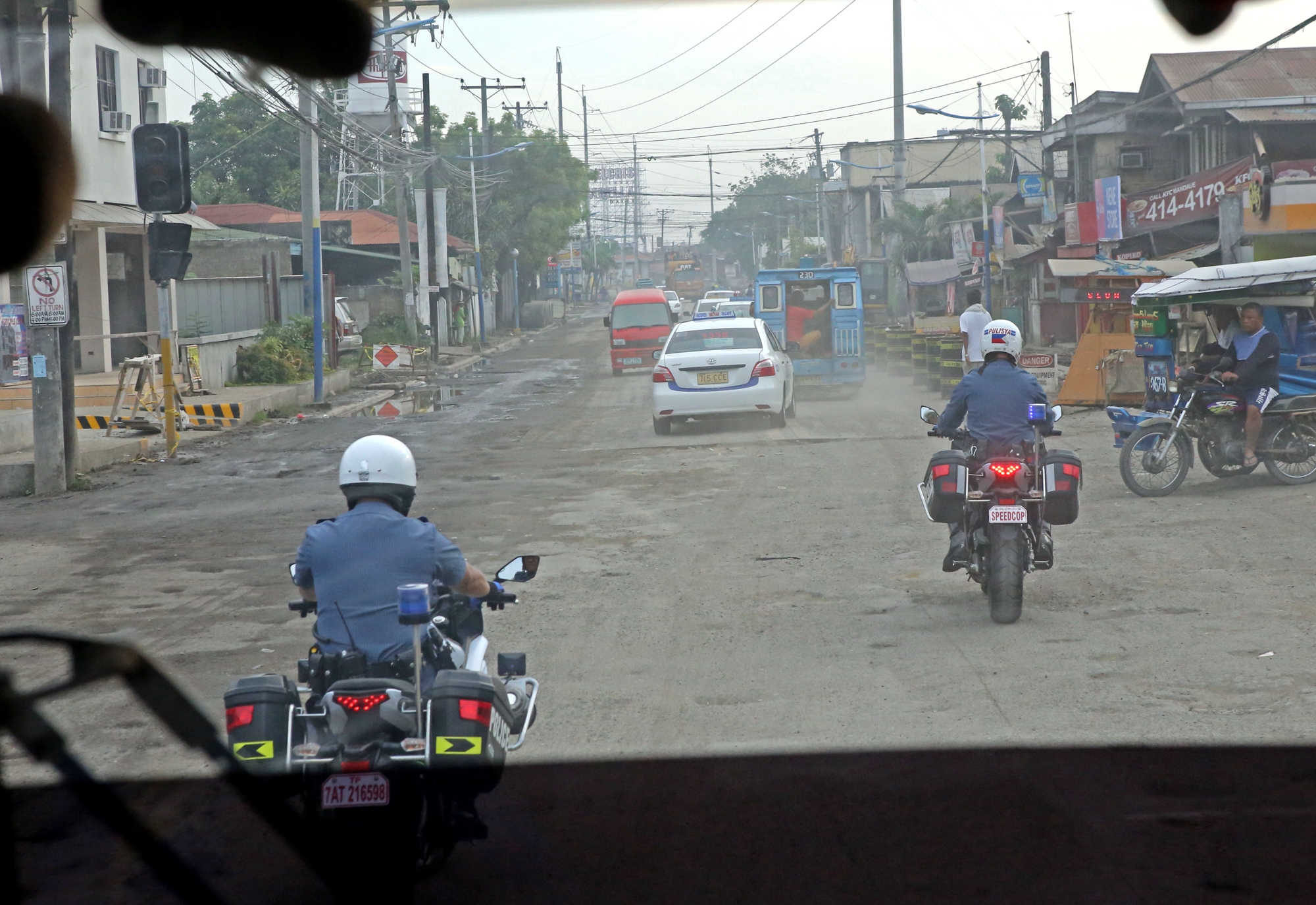
THAT TIME AGAIN. Mandaue City’s Plaridel Street needs a lot of work if the city government intends to make it as comfortable as it can be for participants of the 2015 Cobra Ironman event.(CDN PHOTO/LITO TECSON)
Removal should be backed by study, not opinion—IEC venue chief
A Church official in charge of the venue for next year’s International Eucharistic Congress (IEC) said any removal of trees planted in center islands should be backed by scientific study confirming effectiveness in easing traffic.
“The city government should have a study, a legitimate scientific study on removing these trees. We cannot just remove them without understanding its real effect,” said Fr. Brian Brigoli, who heads the committee on venue for the 2016 IEC.
The Cebu Archdiocese has yet to come up with an official stand on Cebu City Mayor Michael Rama’s plan to remove the center island, and the trees within, in front of the San Carlos Seminary Complex on Pope John Paul II Avenue.
Msgr. Joseph Tan, Cebu Archdiocesan spokesman and media liaison officer for the 51st IEC, said Brigoli’s statements could be his personal take on the issue.
“I remember Mayor Rama talking about the plan during the topping-off ceremony at the Eucharistic Pavilion last July 15 but at that time, there was no reaction from the Archdiocese. No official pronouncement,” Tan said.
“After a few days, I don’t know (if the Church already has a stand). We’re grateful to the mayor since he’s cooperated with us in several ways in helping us with the IEC,” Tan said.
The mayor said the removal of the center island will ease traffic flow for the Asia-Pacific Economic Cooperation (APEC) meetings this August and the IEC next January.
Rama said the trees will be earthballed and transferred to another property.
Significant
Brigoli said the committees agreed to cooperate fully with the city government on “affirmative and advantageous traffic improvement based on research.”
He said the Cebu City government should not just rely on opinions and their observations.
“The Church won’t agree to sacrifice those trees if studies show that there will only be momentary and slight traffic changes. The changes have to be significant,” Brigoli said.
Brigoli said a study would be very valuable and should include data on the survival rate of earthballed trees.
In a letter sent to Cebu Daily News’s opinion page in last Saturday’s issue, the civil society group Movement for a Livable Cebu called for the retention of the trees at the center island along Pope John Paul II Avenue.
Guidelines
Eddie Llamedo, spokesman of the regional Department of Environment and Natural Resources (DENR) office, said there is no assurance that the trees on the center island will survive a transfer.
Based on their initial inspection, Llamedo said the trees on the center island are over 30 centimeters in diameter.
He said based on the agency’s guidelines, only trees with a diameter of less than 15 centimeters may be earth-balled.
“The reason for this guideline is that there might be a chance that the trees won’t survive, especially if they are fully grown, which is why we ask the mayor to take this action with care,” Llamedo said.
Llamedo said the mayor should consider other options for reducing traffic.
Rafael Yap, former Cebu City Traffic Operations Management (CITOM) chief, said a series of intensive meetings on the city’s traffic situation led them to conclude that a better traffic management plan can resolve the congestion.
Thinning out
“Many of our roads are problematic in the city, but in the context of APEC and IEC, we have to decongest the roads that lead to John Paul II, which includes the Banilad-Talamban Corridor, MJ Cuenco, and Gorordo,” Yap told Cebu Daily News.
He said an effective traffic management plan will suffice with or without the removal of the center islands and its trees.
Yap said they tried thinning out islands, an example of which is in Escario.
“I refuse to comment regarding the islands, but as far as Citom is concerned, a better traffic management plan is what Citom will work on to decongest Cebu City’s roads,” Yap said./With UP Cebu Intern Juli Ann M. Sibi